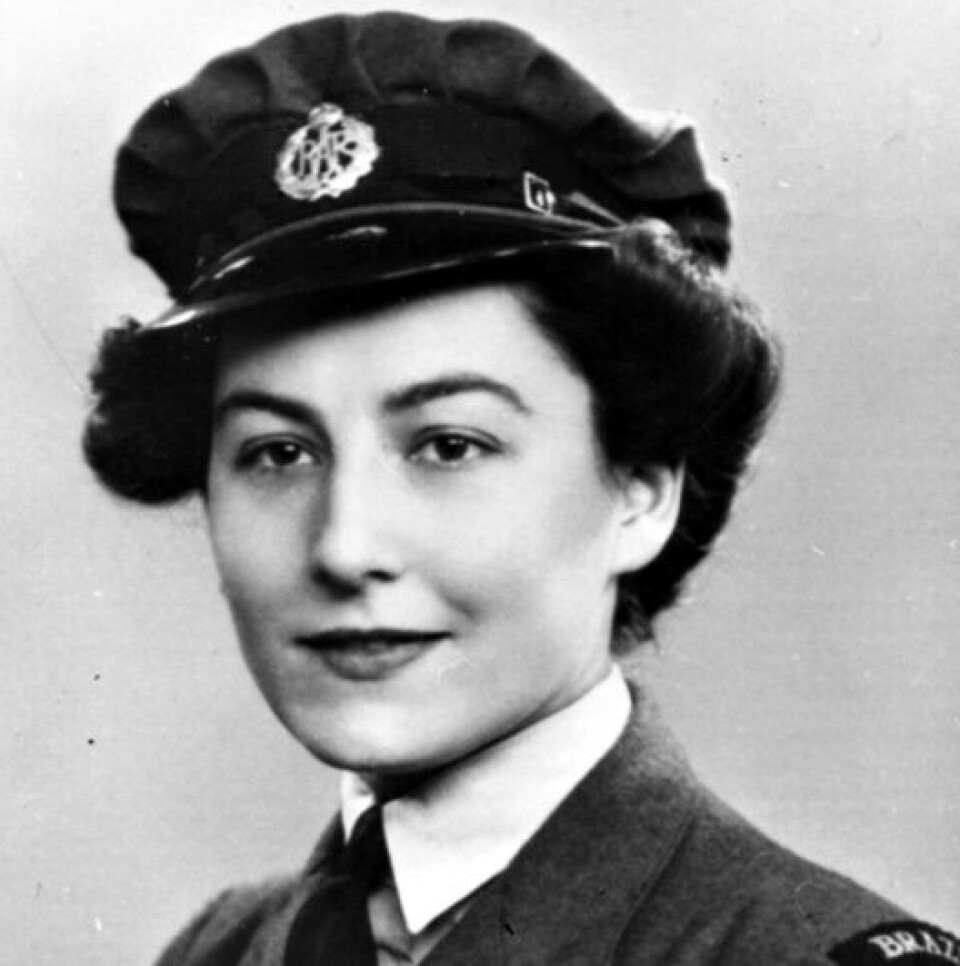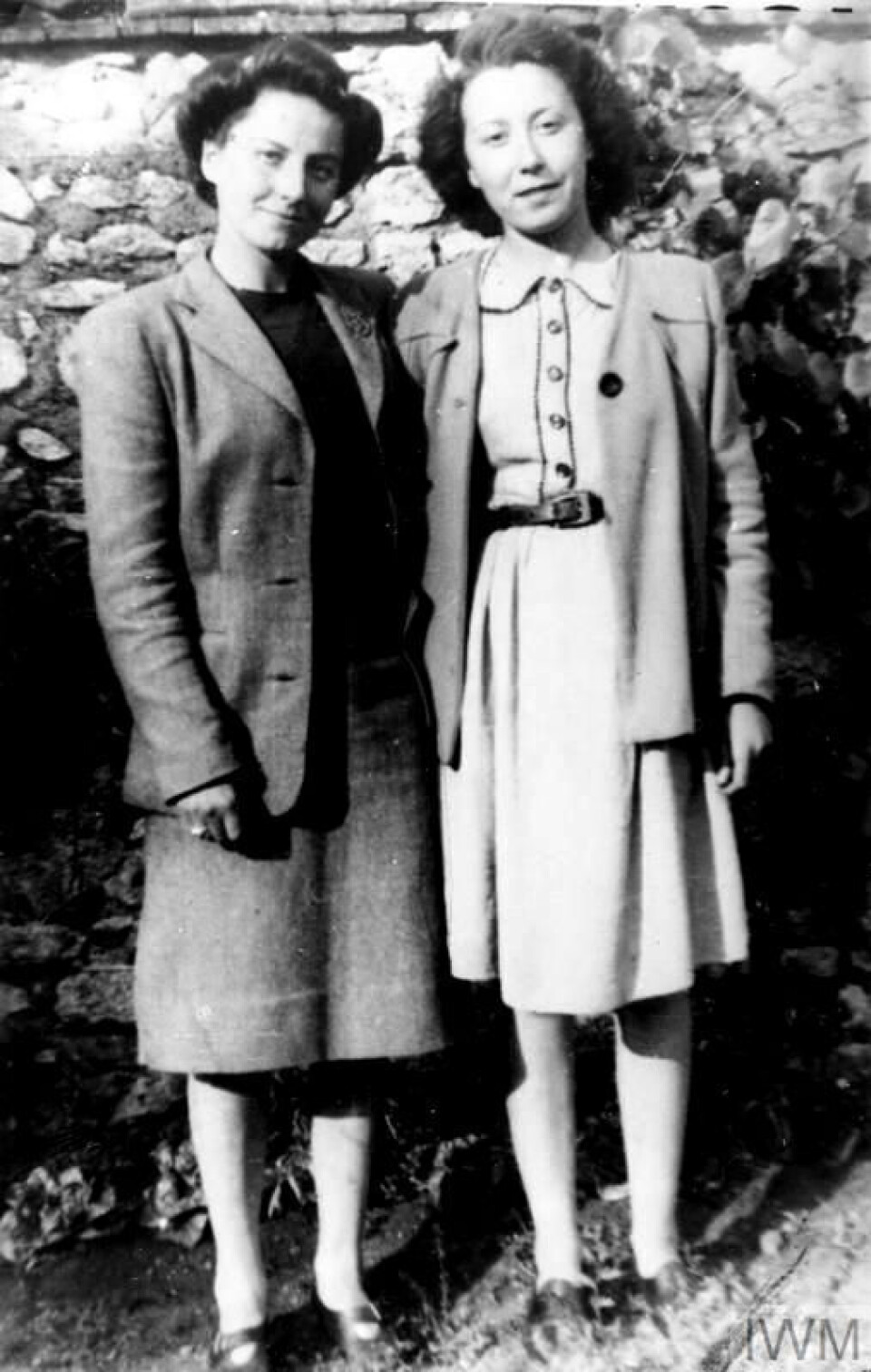-
QR code to replace paper instructions for 100 medicines in France in new trial
Paracetamol and cholesterol medication to be included in scheme that launches this autumn
-
Online ‘anti-waste’ supermarket offers deals on everyday items in France - we test it
Discounts of 10% to 50% available on brand products
-
The curious case of Good Friday: Why only some parts of France have the day off
Three French departments benefit from two extra public holidays
The remarkable WWII story of a British secret agent in occupied France
Lilian Rolfe (1914-1945) will get further recognition in Paris on Friday for her role in freeing France from Nazi Germany

Secret agents played a significant role in liberating Europe during World War Two. Many suffered terrible consequences. This is the story of just one: Lilian Rolfe.
Born in Paris but holding British nationality, Ms Rolfe was dropped into occupied France in April 1944 with the aim of supporting the French Resistance and reporting German troop movements back to London.
Less than a year later, she would be dead. But her daring and courage were later recognised, with France posthumously awarded her the Croix de Guerre, a French military decoration to reward feats of bravery during the war.
On Friday (May 19) she will receive further posthumous recognition when Paris’ mayor, Anne Hidalgo, unveils a plaque commemorating Ms Rolfe’at her family’s former home in the French capital.
Secret agents ‘among bravest’ of World War Two
On July 16, 1940, as Luftwaffe bombers stepped up their attacks and Britain prepared its defences against the threatened invasion, Prime Minister Winston Churchill - anxious to hit back and show the country was not defeated - ordered the establishment of a special covert unit to infiltrate occupied territories and “set Europe ablaze!”
The highly secret Special Operations Executive (SOE) was formed less than a week later to undertake reconnaissance, espionage and sabotage operations in occupied Europe.
SOE conducted hundreds of highly effective sabotage and covert actions to disrupt enemy activity and were especially important in their operations disrupting enemy reaction to the Allied invasion on June 6, 1944.
By the very nature of an organisation of this kind, its operatives could be ruthlessly tortured or executed if caught, and their members were among the bravest individuals of World War Two.
The first SOE agent was parachuted into occupied France on the night of May 5-6, 1941.
Ms Rolfe would not arrive for another three years.
Born and educated in Paris, she moved with her family to Brazil in the mid-1930s. Aged 25 at the outset of World War Two, she was working for the British embassy in Rio de Janeiro.
But she was keen to play a more active role in helping Britain and free the country of her birth. In 1943 she left Brazil on a passenger ship chartered to collect hundreds of people in South America keen to join the Allied cause.
Arriving in the UK, she volunteered for the Women's Auxiliary Air Force, before later becoming a wireless operator.
In December 1943, she confided in a close friend that she had volunteered for ‘special duties’ and had been accepted.
Read also: President Macron pays tribute to Resistance leader Jean Moulin
Arriving in occupied France
An aeroplane dropped Ms Rolfe near Orléans in occupied France in April 1944. She first found her way to Châteauroux to meet with her designated contact before moving on to Saint Gaultier to see her commanding officer, George Wilkinson, who was being sheltered by a shopkeeper called Monsieur Dappe in the town.
Only an hour after Ms Rolfe and Mr Wilkinson left Dappe’s house, Germans raided it and arrested the shopkeeper after someone at the town’s mairie denounced him for helping Allied agents.
Ms Rolfe moved on to Saint-Hilaire, where she was accommodated by the owner of a garage. She stayed for little more than two weeks but made a lasting impression on her hosts.
There, she started transmitting messages to England and received replies – often throughout the night. As time permitted, she would also cycle about the area to note what the German forces were doing in the locality and, if considered important, report their activities back to England.
Lilian’s stay there came to an end when a German direction-finding car - used by the Nazi secret services to track down enemy clandestine radios - stopped one day outside the house.

Mr Wilkinson happened to be visiting Ms Rolfe and together they took up arms and awaited what they expected to be the inevitable assault on the house. But, perhaps because there was only one German in the car, it drove away.
Not taking any chances, Mr Wilkinson immediately arranged for Ms Rolfe to leave, moving her on to Égry, where she was to support the activities of Pierre Charié, a wine merchant who was also the regional organiser of several maquis Resistance groups.
Her commanding officer Mr Wilkinson was arrested on June 26, 1944. With the Germans seemingly closing in, Ms Rolfe was ordered to move on every couple of days. She had done just that - to the home of two school teachers, Jeannette and Maurice Verdier, in the village of Nargis, some 15 kilometres north of Montargis - when her luck finally ran out.
Read also: Families launch appeal to save French WW2 massacre ruins
Bad luck or betrayal?
On July 31, 1944, a stranger appeared at the house but having given the correct password, he was admitted. It triggered a Gestapo raid that netted Ms Rolfe, her bodyguard François Bruneau, and the Verdiers. Bruneau, though handcuffed, managed to escape and made his way on foot the 16 kilometres to find Mr Charié and warn him of her capture.
Sadly, it was later realised that a strong maquis Resistance unit had been close at hand to the location where Lilian was arrested, but because of the security measures in place in Charié’s organisation, Bruneau was unaware.
Two theories were later to emerge as to the cause of Ms Rolfe’s arrest. One is that she was simply caught through bad luck – that the Germans were looking for someone else and came upon her by chance.
The second, however, centres on the use of the Resistance password by the stranger who called at the house. The source of this password was later claimed to be Annick Boucher, alias Yvonne Tessier, and known locally as “la belle Annick” or “la grande blonde”.
Nominally a member of the Resistance, Boucher was also allegedly the mistress of a number of German officers, including the second-in-command of the Orléans Gestapo. She is believed to have been in the pay of the German security services and it is this connection that led to suspicion falling on her for Ms Rolfe’s arrest.
Mr Charié began planning a rescue attempt for the young woman. Knowing that she had been first taken to Montargis, he anticipated that she would soon be transferred to captivity in Orléans, before being sent to Fresnes Prison and questioning in Paris. He, therefore, arranged for his maquisards to attack any enemy car leaving the Germans’ prison in Montargis.
But the enemy, perhaps realising the importance of quickly trying to coerce Ms Rolfe into continuing radio transmissions to England, had already transferred her to Fresnes prison on the outskirts of Paris, from where it can be presumed she was taken for interrogation.

Final days
After interrogation in Paris, Ms Rolfe was transferred to Ravensbrück Concentration Camp in Germany, along with two other SOE members, Denise Bloch and Violette Szabo.
She was then sent to work at Torgau in north-western Saxony. On the journey there, she befriended a Frenchwoman, Jacqueline Bernard, who post-war said Ms Rolfe had told her the Germans had attempted to make her transmit to London as a double agent. She had refused to do so and had withstood interrogation which had sought details of the SOE’s French section.
Ms Rolfe was not well on the transport to Torgau and was found to be suffering from a bout of fever. Regardless of this, she had to endure a long walk in hot weather from the station to the work camp, only managing to do so with the help of several other women. On arrival, she fainted and was admitted to the camp’s hospital where she was permitted to stay for the entire three weeks that she, Ms Bloch and Ms Szabo were at Torgau.
In early October, Ms Rolfe was sent to work at Königsberg in East Prussia - modern day Kaliningrad, a Russian exclave. She was ill again and this time a sympathetic Polish nurse exempted her from working. It was fortunate since the women still only had light dresses amid snowy and bitterly cold conditions.
Read also: Netflix tells of Americans in Marseille who saved thousands from Nazis
Read also: Marseille was early ‘Resistance capital’ as new series shows
She remained cheerful
In the hospital, she befriended another Frenchwoman who later described how Ms Rolfe’s health deteriorated at this time. She had difficulty digesting food and became very thin and weak. What nevertheless continued to impress all who knew her at that time was her spirit and morale, she remained cheerful and relished the occasional news of Allied advances.
Ms Rolfe was recalled to Ravensbrück in January 1945. She was first held in the punishment block. By now, Ms Rolfe was too weak to walk and after three or four days she was moved again into a solitary confinement cell in the Zellenbau, a segregated semi-bunker block that could not be observed from within the camp.
She was never seen again by any of the other prisoners in the camp and while there were rumours that she had been released and been seen back in France, the true circumstances of her fate were not discovered until Vera Atkins’s investigations in 1945 and 1946 into the fates of SOE’s missing agents.
Ms Rolfe was believed to have been executed between January 25 and February 5, 1945.
Reports suggest she was still so ill that she had to be carried on a stretcher for even the short journey from her cell to the adjacent yard where Ravensbrück’s camp commandant, SS-Stürmbannfuhrer Fritz Sühren, was waiting to read out the execution order.
SS-Sturmann Schult (or Schulter), then shot her through the back of the neck using a pistol. Her body was immediately burned in the camp’s crematorium, only a few metres away.
This article is an edited version of one published by the Allied Forces Heritage Group. Credits: Author: Paul McCue. Presentation and additional research: Ian Reed. See www.afheritage.org
























